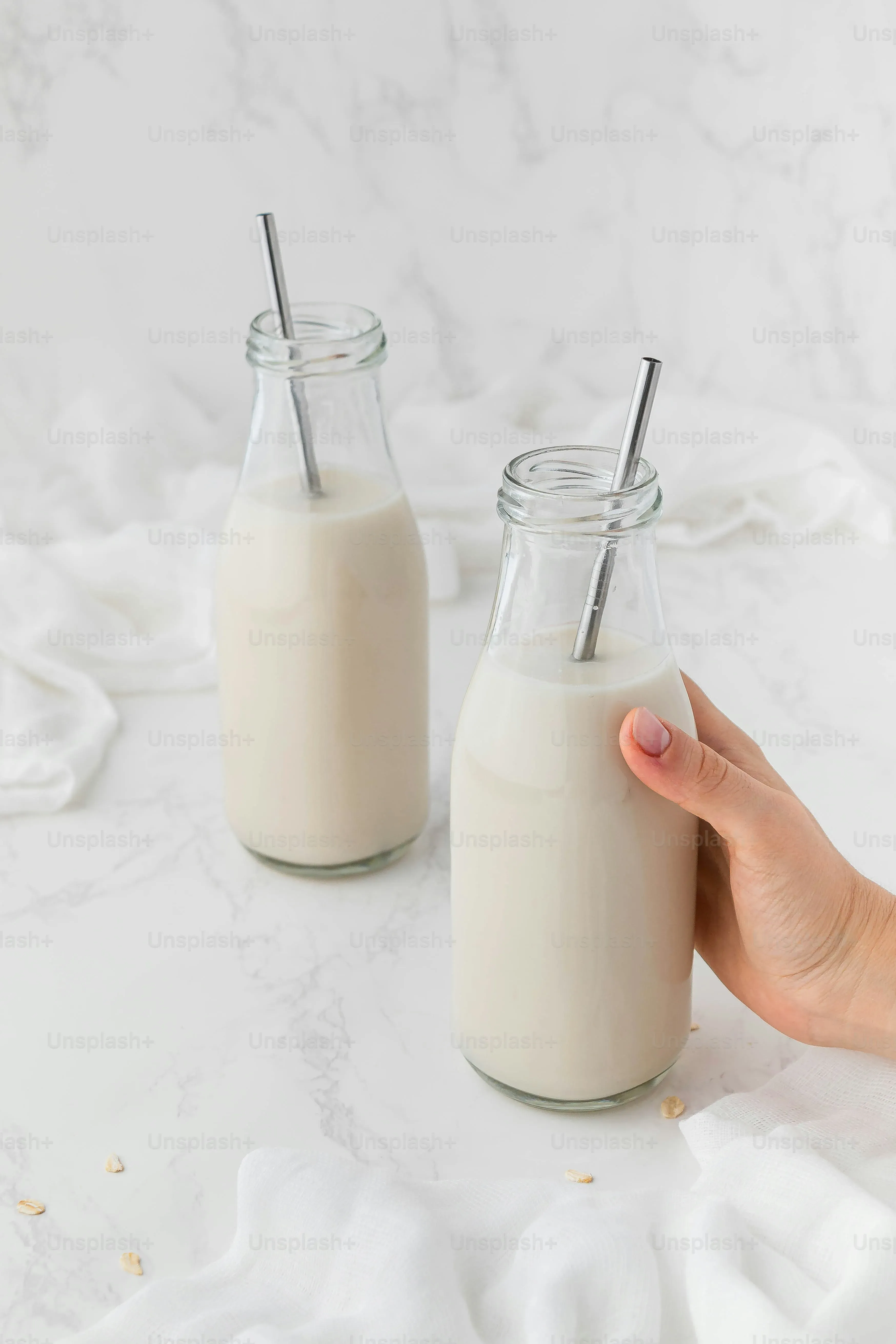Table of Contents
For decades, the dietary advice felt pretty straightforward: shun the fat, especially from dairy. You probably grew up hearing that low-fat milk was the healthy choice, the sensible option to protect your heart and waistline. Full-fat milk? That was the indulgence, the stuff you enjoyed but maybe felt a little guilty about. But the conversation around dairy fat has gotten decidedly more complicated recently. Suddenly, you see headlines suggesting maybe, just maybe, full-fat isn't the dietary villain it was made out to be. So, facing the dairy aisle, you might find yourself wondering: is low fat better than full fat milk, or have we been led down the garden path? This isn't just about calories or grams of fat; it's about how these fats interact with your body, what other nutrients come along for the ride, and how milk fits into your overall diet. Let's dig into what the science actually says, cut through the noise, and figure out what might be the right choice for your glass.
Is Low Fat Better Than Full Fat Milk? The Dairy Debate

Is Low Fat Better Than Full Fat Milk? The Dairy Debate
The Old Guard vs. The New Thinking
For a long time, the official word was loud and clear: fat is bad, especially saturated fat, and dairy is packed with it. So, naturally, the advice was to ditch the whole milk and grab the skim or low-fat version. This wasn't some random guess; it stemmed from the "lipid hypothesis," the idea that eating saturated fat directly raises cholesterol, which then clogs your arteries. It made sense on paper, and it led to decades of dietary guidelines pushing lower fat dairy as the healthier path. Grocery store shelves filled up with 2%, 1%, and skim options, and full-fat milk became the slightly naughty choice you maybe snuck into your coffee when nobody was looking.
But science doesn't stand still, thankfully. Over the last decade or so, researchers started looking closer. They weren't just counting fat grams anymore; they were asking *how* dairy fat behaves in the body. Is it really the cardiovascular villain we made it out to be? Studies began popping up, suggesting that maybe, just maybe, full-fat dairy wasn't linked to heart problems in the way we thought. Some even hinted at potential benefits. This created a real head-scratcher for a lot of people who had been diligently pouring the watery, blue-tinged skim milk for years, believing they were doing the right thing. The question "Is low fat better than full fat milk?" suddenly wasn't so simple anymore.
- Whole Milk: Around 3.25% fat
- Reduced-Fat Milk (2%): 2% fat
- Low-Fat Milk (1%): 1% fat
- Skim/Non-Fat Milk: Less than 0.5% fat
Understanding Dairy Fat: It's Not Just One Thing

Understanding Dairy Fat: It's Not Just One Thing
More Than Just "Saturated"
When people talk about dairy fat, they often just say "saturated fat" like it's a single, monolithic entity. Turns out, that's a bit like saying all cars are just "metal boxes." Dairy fat is actually a complex mix of hundreds of different fatty acids. Yes, a significant portion *is* saturated, but even within the saturated category, there are different types. You've got your shorter-chain fatty acids, like butyric acid (which gives butter some of its flavor), medium-chain ones, and longer-chain ones. They all behave a little differently in the body. So, simply lumping all dairy fat into the "bad saturated fat" bucket overlooks the nuance of what you're actually consuming.
The Dairy Matrix Effect
Here's where things get interesting and why the simple "fat is bad" rule might not fully apply to dairy. Scientists are now talking about the "dairy matrix." This isn't some sci-fi concept; it's about how the fat globules are structured within the milk, surrounded by proteins, carbohydrates (like lactose), vitamins, and minerals. This structure, this matrix, seems to influence how our bodies process the fat and other nutrients. It's not just the amount of fat, but how it's packaged. Eating fat within this natural matrix appears to have different metabolic effects compared to consuming the same amount of fat in isolation or from other sources.
Think of it like this: eating a handful of whole almonds (fat, fiber, protein, etc., all together) is different from drinking almond oil straight. The whole food matrix matters.
Common Dairy Fatty Acids | Type | Notes |
|---|---|---|
Butyric Acid (C4:0) | Saturated, Short-Chain | Unique to butter/dairy fat, linked to gut health |
Palmitic Acid (C16:0) | Saturated, Long-Chain | Also found in palm oil, most abundant saturated fat in dairy |
Oleic Acid (C18:1) | Monounsaturated | Same fat found in olive oil |
Conjugated Linoleic Acid (CLA) | Trans Fat (Natural) | Naturally occurring, studied for various health effects |
Naturally Occurring "Good" Fats?
Beyond the standard saturated and unsaturated fats, dairy fat contains some minor components that have sparked scientific curiosity. One often-discussed example is Conjugated Linoleic Acid, or CLA. This is a naturally occurring type of trans fat found in meat and dairy from grazing animals. Unlike the artificial trans fats found in some processed foods that are linked to negative health outcomes, CLA has been studied for potential benefits, including effects on metabolism and immune function. The research isn't conclusive, and you'd need to drink a frankly absurd amount of milk to get therapeutic doses, but its presence highlights that dairy fat isn't just a source of saturated fat; it's a complex package with various components, some of which are still being explored for their impact on health, making the question "is low fat better than full fat milk" require a closer look at *what* kind of fat we mean.
Beyond the Fat: What Else Does Milk Offer?
More Than Just Creaminess
so we've chewed over the fat part, and it's more complicated than the old "saturated fat is evil" line. But focusing only on the fat in the "is low fat better than full fat milk" debate misses a huge chunk of the picture. Milk isn't just a fat delivery system; it's a nutritional powerhouse packed with other good stuff. We're talking high-quality protein, the kind that has all the essential amino acids your body needs for building and repairing tissue. It's famous for calcium, obviously, which is critical for bone health, but it also brings along vitamin D (often added), phosphorus, potassium, and B vitamins like riboflavin and B12. Skim milk still has all these nutrients, but the fat-soluble vitamins A and D (if not added back) are reduced when the fat is removed. So, when you strip out the fat, you're not just changing the calorie count; you're potentially altering the package of vitamins that come with it.
What are the key nutrients in milk beyond the fat?
- High-quality Protein
- Calcium
- Vitamin D (often fortified)
- Vitamin B12
- Riboflavin (Vitamin B2)
- Phosphorus
- Potassium
How Much Dairy Fat Should You Really Have? Finding Balance

How Much Dairy Fat Should You Really Have? Finding Balance
Finding Your Dairy Sweet Spot
so if the old "fat is bad" rule for dairy is getting fuzzy, that leaves us with a practical question: how much dairy fat *should* you be having? The truth is, there's no single magic number that works for everyone. It depends on your overall diet, your activity level, and your personal health goals. Dietary guidelines still often recommend limiting saturated fat, usually to around 10% of your daily calories, or even lower if you have heart concerns, as the American Heart Association suggests aiming for 5-6%. Since full-fat dairy contributes saturated fat, simply swapping all your dairy to full-fat everything might push you over that limit pretty quickly, especially if you're getting saturated fat from other sources like meat or baked goods. The key isn't necessarily picking one side in the "is low fat better than full fat milk" battle and sticking to it rigidly, but rather finding a balance within your entire eating pattern.
Is Low Fat Better Than Full Fat Milk? Making Your Personal Choice

Is Low Fat Better Than Full Fat Milk? Making Your Personal Choice
It's Not a Dairy Duel, It's Your Diet
So, after wading through the nuances of dairy fat and the matrix effect, are we any closer to answering definitively: is low fat better than full fat milk? Honestly, the most accurate answer is, it depends. It depends entirely on the rest of your diet and your individual needs. If you're someone who gets a lot of saturated fat from other sources – maybe you eat a fair amount of red meat, butter, or processed foods – then opting for lower-fat dairy might be a sensible way to keep your overall saturated fat intake within recommended limits. On the flip side, if your diet is primarily plant-based with lean proteins and healthy fats from things like avocados and nuts, incorporating some full-fat dairy might not significantly impact your saturated fat numbers and could offer the benefit of those fat-soluble vitamins and the satiety that fat provides. There's no moral superiority in choosing one over the other; it's about the bigger picture on your plate throughout the day.
Practical Steps for Your Dairy Decision
Making the choice between low-fat and full-fat milk (or yogurt, or cheese) comes down to practical considerations. First, consider your taste buds. If the thought of skim milk makes you sad, you're less likely to stick with it. Enjoying your food matters for long-term healthy eating. Second, look at the nutrition labels, not just for total fat, but saturated fat. See how a serving fits into your daily saturated fat budget. Third, don't feel pressured to pick one and ban the other forever. Maybe you prefer full-fat milk in your coffee but use low-fat yogurt for smoothies. Mixing and matching is perfectly fine and can help you get the benefits of both while managing your fat intake. Ultimately, the question "is low fat better than full fat milk" is less important than "how does this dairy fit into my overall pattern of eating for health and enjoyment?"
So, what's your personal dairy strategy?
So, Is Low Fat Better Than Full Fat Milk? The Verdict Isn't Simple
After wading through the studies and ditching the decades-old dogma, the answer to whether is low fat better than full fat milk is clearly "it depends." The black-and-white world where saturated fat was public enemy number one has given way to a more complex picture. Full-fat dairy isn't the dietary demon it was once portrayed as, potentially offering some benefits or at least not posing the risks previously assumed for some people. Low-fat options still serve a purpose, particularly for those managing calorie or saturated fat intake strictly. Ultimately, fixating solely on the fat percentage in your milk misses the larger point. Your overall dietary pattern, activity level, and individual health profile matter far more than whether your milk is 2% or whole. Choose what fits your taste, your budget, and your broader eating habits, and remember that moderation and context are, as always, the adults in the room.
